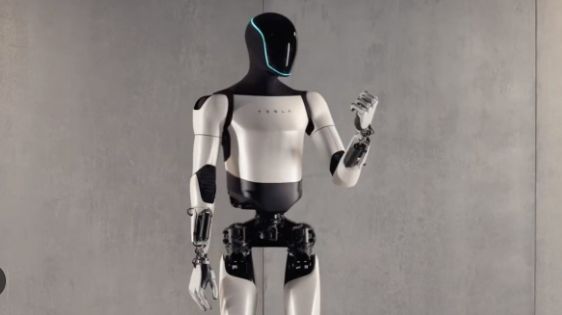Optimus Robot Tesla will make history. Elon Musk has confirmed that SpaceX is to launch a Starship rocket to Mars in 2026, with this humanoid robot aboard. If it is successful, it will be a major breakthrough in space exploration. The mission will provide important tests prior to humans arriving on the Red Planet.
A Bold Plan for the Future
Elon Musk has always been famous for his big projects. Now, he intends to send Optimus Robot Tesla to Mars ahead of humans. In his estimates, the first human landing may occur in 2029 or 2031. But before that, Tesla’s humanoid robot will be used as a test subject for future missions.
The purpose of the mission is to experiment with essential technologies that are needed to travel to space and explore the planet. With the success of Optimus Robot Tesla in Mars, manned missions will follow. The success of the undertaking rests on several considerations, one of which is the Starship rocket’s ability to be a reliable means of transport and how the robot could work in a foreign environment.
Why Send a Robot to Mars First?
Sending Optimus Robot Tesla to Mars is a strategic decision. Unlike humans, robots do not require oxygen, water, or food. They can survive extreme temperatures and harsh conditions. This makes them ideal for early exploration.
NASA, however, has other priorities. The space agency is concentrating on its Artemis program, which will send humans back to the Moon before going further into space. NASA does not anticipate sending humans to Mars until the late 2030s.
Tesla’s robot, however, may accelerate the process. If Optimus Robot Tesla can effectively collect data, construct infrastructure, and prepare habitats, human missions may occur earlier than anticipated.
A Trial for Upcoming Space Missions
The mission is not all about Tesla’s Optimus Robot Tesla. It is also a critical test for SpaceX’s Starship. The trip to Mars takes time, some 300 days. The Starship has to prove its capacity for a long-duration mission.
In addition, the robot will assist in testing on-site exploration methods. It may examine Martian soil, gather samples, and even construct buildings. If they work, these technologies will be crucial when astronauts finally arrive.
Tesla’s Past Space Ventures
This is not the first unusual space mission made by Elon Musk to make the headlines. Back in 2018, SpaceX sent a Falcon Heavy rocket and a Tesla Roadster into space. The vehicle, with an astronaut dummy sitting in the driver’s seat, has been circling the Sun since then. Last year, even astronomers confused it with a potentially hazardous asteroid.
The deployment of Optimus Robot Tesla to Mars will be yet another ambitious move in Musk’s vision of making humanity a multi-planetary species.
The Challenges Ahead
Notwithstanding the euphoria, numerous challenges lie ahead. The Starship rocket has yet to conduct a successful deep-space mission. Technical challenges are also present in having the Optimus Robot Tesla operate in an unpredictable Martian environment.
For one, the robot must operate in low gravity, withstand radiation exposure, and navigate rocky terrain. Tesla will need to develop advanced AI and self-repair capabilities to ensure the robot can function without human intervention.
What Happens Next?
If all goes well, Optimus Robot Tesla will land on Mars in 2026. SpaceX will closely monitor its performance. If the mission succeeds, the next step will be preparing for human landings.
In the meantime, NASA will also go on sending its Artemis missions, but with a focus on lunar missions. Yet, Tesla’s robotic mission might advance the timeline for exploring Mars.
A New Age in Space Exploration
Elon Musk has never been one to dream small. The optimization of Optimus Robot Tesla is just part of the journey toward achieving his vision of making humanity interplanetary. If the robot can survive and be used on Mars, it will be a giant leap forward in space technology.
As the world waits for the countdown to 2026, the world eagerly awaits. Will Optimus Robot Tesla be the first step toward a human settlement on Mars? Only time will tell. All in all, it will be interesting to follow what the future has for Tesla and Mars.








